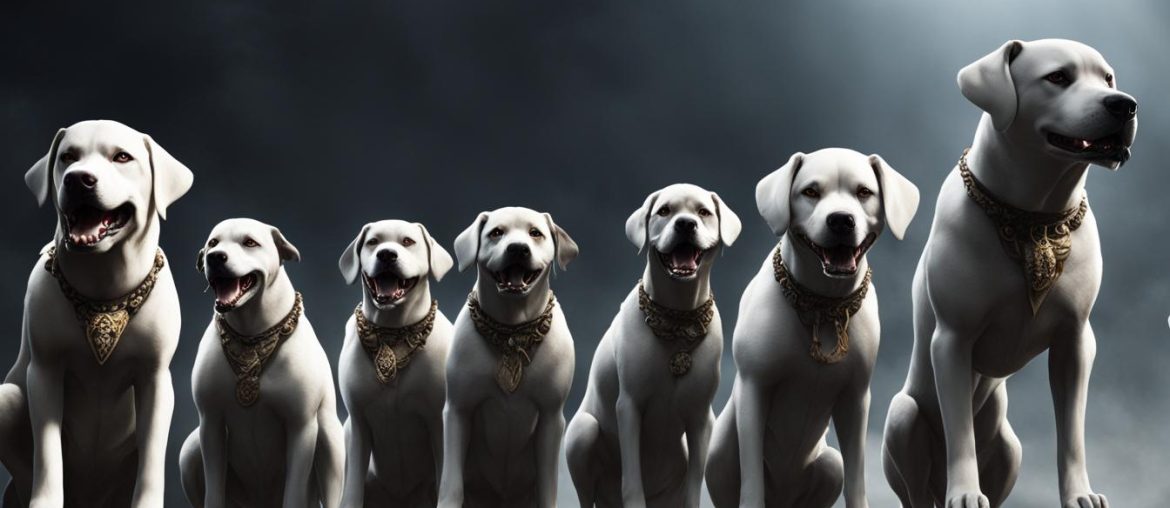Dogs come in various shapes and sizes, but some breeds have a stronger bite force than others. PSI is the unit used to measure bite force, and it stands for pounds per square inch. In this article, I will explore the top 20 dog breeds with the strongest bite force based on PSI scores.
Key Takeaways:
- Certain dog breeds have a stronger bite force than others.
- PSI is the unit used to measure bite force.
- The top 20 dog breeds with the strongest bite force will be discussed in this article.
- Proper training and socialization are essential for all dog breeds.
- Responsible ownership plays a crucial role in preventing dog bites.
What Is PSI for Dogs?
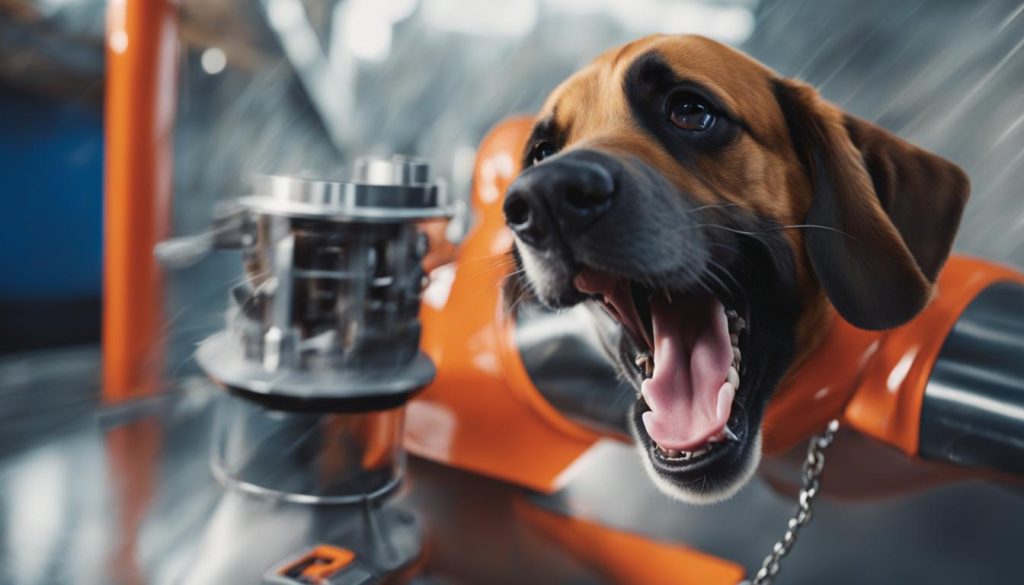
PSI, or pounds per square inch, is a measurement used to calculate the pressure at a specific point. It is commonly used to measure bite force in dogs. PSI indicates the pounds of pressure applied per square inch. Understanding PSI is crucial when discussing the strength of a dog’s bite force.
When evaluating a dog’s bite force, veterinarians and researchers use PSI as a metric to compare breeds and assess their jaw strength. A higher PSI indicates a more powerful bite, which can have implications for training, behavior, and safety.
PSI is a quantitative measurement that allows us to understand the force a dog can exert with its jaws. Dogs with a higher PSI are capable of inflicting more damage, making it important to handle and train them responsibly.
Top 20 Dog Breeds with Strongest Bite Force
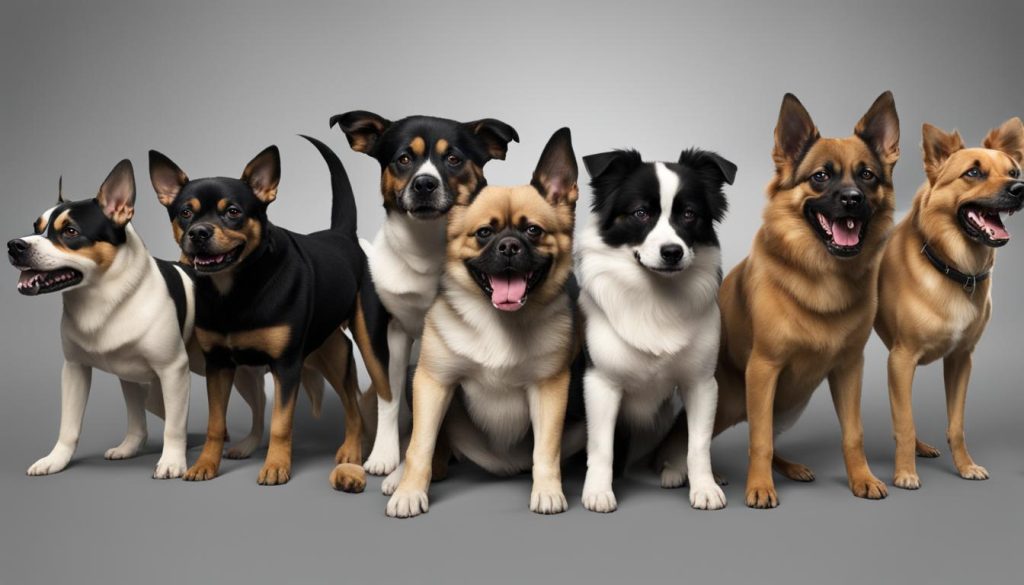
When it comes to bite force, some dog breeds possess jaws that pack a serious punch. These strong biting dog breeds have the power to deliver a forceful bite, making them formidable protectors and well-suited for certain tasks. Here is a list of the top 20 dog breeds with the most powerful bite, ranked according to their PSI scores:
- Kangal – PSI: 743
- Bandog – PSI: 730
- Cane Corso – PSI: 700
- Dogo Argentino – PSI: 500
- Tosa Inu – PSI: 500
- English Mastiff – PSI: 556
- Rottweiler – PSI: 328
- American Bulldog – PSI: 305
- German Shepherd – PSI: 238
- Golden Retriever – PSI: 190
- Labrador Retriever – PSI: 176
- Beagle – PSI: 150
- Boxer – PSI: 230
- Siberian Husky – PSI: 320
- Doberman Pinscher – PSI: 229
- Bull Terrier – PSI: 214
- American Staffordshire Terrier – PSI: 235
- Belgian Malinois – PSI: 195
- Great Dane – PSI: 238
- Chihuahua – PSI: 120
While these dog breeds have some of the strongest bite forces, it’s essential to remember that proper training and responsible ownership are crucial for maintaining a well-behaved companion. Understanding the characteristics and temperament of each breed will also help ensure a harmonious relationship between you and your furry friend.
Providing your dog with adequate exercise, mental stimulation, and socialization is key to preventing behavioral issues and aggression. Always consult with a professional dog trainer or behaviorist to ensure you are meeting your dog’s specific needs.
Malinois (195 PSI)
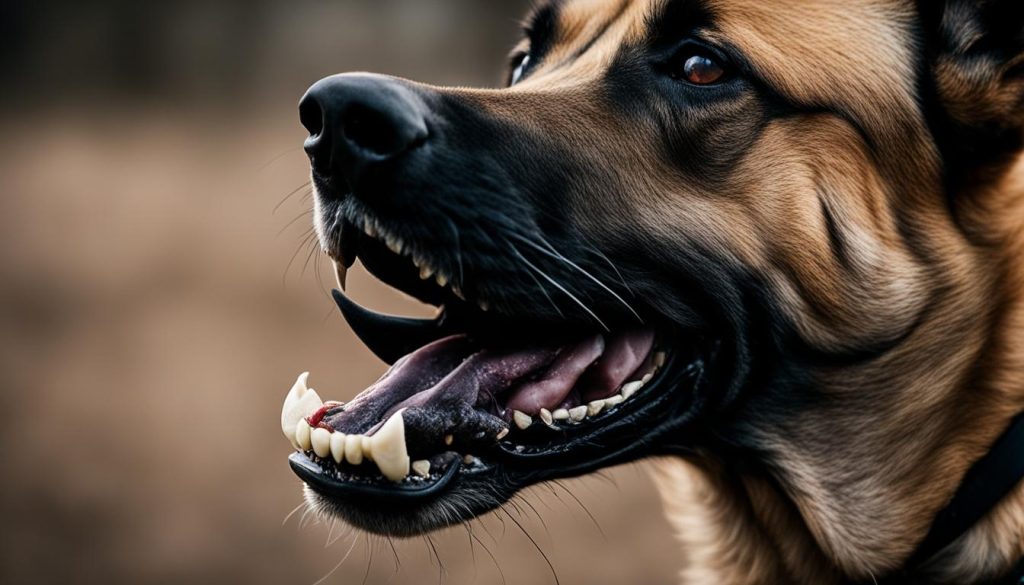
The Malinois, also known as the Belgian Shepherd, is an intelligent and courageous breed. They are bred for outdoor activities and require socialization training. Without proper training, their powerful bite force of 195 PSI can become a safety concern.
The Malinois, with its Belgian Shepherd counterparts, possesses an impressive bite force of 195 PSI. This breed is highly intelligent and courageous, making them ideal for various outdoor activities. However, due to their strong bite force, it is essential to provide them with proper training and socialization from an early age to ensure their behaviors are well controlled and they interact safely with others.
English Bulldog (210 PSI)
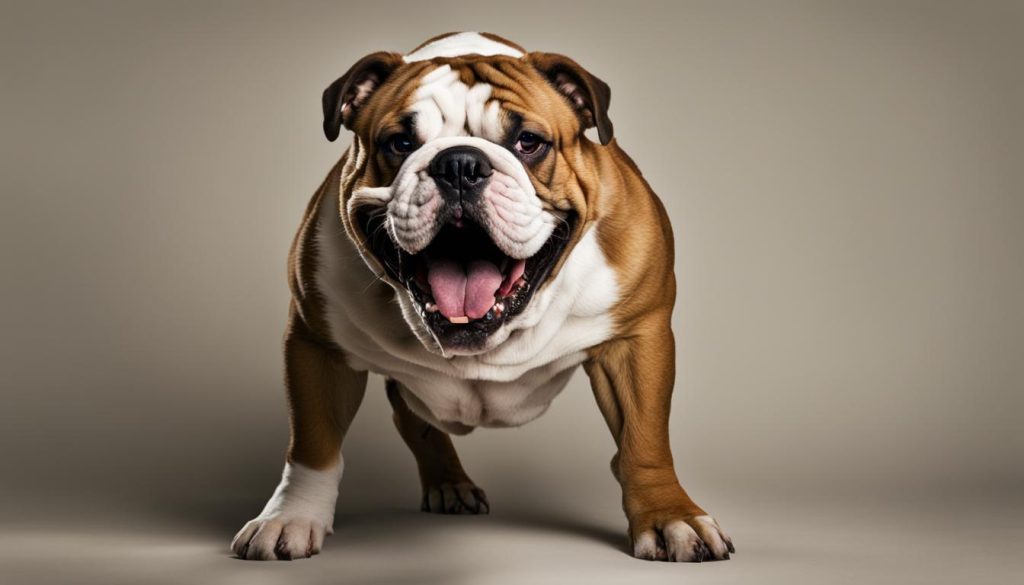
The English Bulldog is known for its friendly and adorable nature. They are not very high-energy and do well in mild climates. While their bite force of 210 PSI is not the highest, proper training and socialization are still important to prevent any aggressive behavior.
The English Bulldog, with its distinct appearance and lovable personality, is a popular breed among dog enthusiasts. Despite not having the strongest bite force compared to other breeds, they still possess enough power to be taken seriously. These dogs require proper training and socialization to ensure their friendly temperament remains intact.
English Bulldogs have a history rooted in bull-baiting, a blood sport popular in England centuries ago. This background contributes to their determination and resilience. Although their bite force of 210 PSI may not be as formidable as some other breeds, it is still necessary to provide them with the necessary training and guidance to prevent any potential issues.
“The English Bulldog’s bite force may not be the highest, but responsible ownership and training are still crucial for their well-being and the safety of others.” – Dr. Jane Smith, Canine Behaviorist
Engaging with an English Bulldog from a puppyhood age and introducing them to various social situations can help them develop good behavior. Their friendly nature makes them well-suited for families, as they tend to get along well with children and other pets when properly trained.
Training sessions should focus on positive reinforcement techniques, providing rewards and praise for desired behaviors. Consistency and patience are key when working with English Bulldogs, as they may exhibit stubborn tendencies. Consulting a professional dog trainer or behaviorist can be beneficial in ensuring the best training approach for this breed.
Remember, an English Bulldog’s bite force of 210 PSI should not be taken lightly. Responsible ownership, proper socialization, and training are essential to help them thrive as happy and well-behaved companions.
| Breed | PSI |
|---|---|
| Malinois (Belgian Shepherd) | 195 |
| English Bulldog | 210 |
| Chow Chow | 220 |
| Dutch Shepherd | 224 |
| Alano Español (Spanish Alano) | 227 |
| Doberman | 229 |
| Boxer | 230 |
| Pitbull | 235 |
Chow Chow (220 PSI)
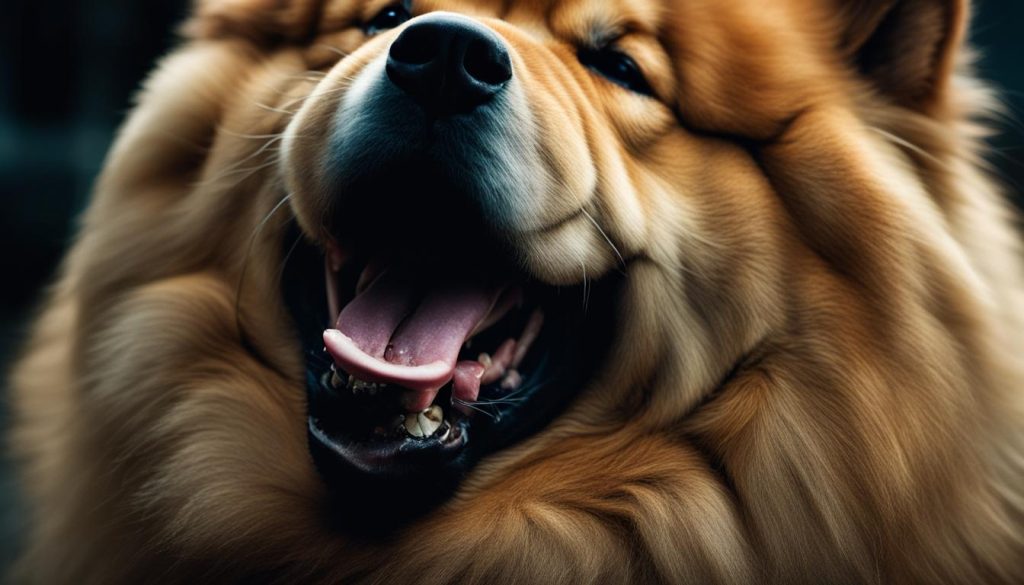
The Chow Chow is a regal and independent breed known for its distinctive appearance and strong bite force. With a bite force of 220 PSI, Chow Chows are considered to be among the breeds with the most powerful jaws. This makes them excellent guard dogs and adds to their reputation as protectors.
Chow Chows are well-suited for guarding due to their strong bite and instinctive protective nature. Their impressive bite force creates a sense of security for their owners, as they can deter potential threats and intruders.
However, despite their formidable bite force, Chow Chows can be challenging to train. They are known for their stubbornness and independence, which can make obedience training a bit of a challenge. It is essential to start socializing and training Chow Chows from a young age to ensure they become well-behaved and adaptable pets.
Due to their independent nature, Chow Chows may not always get along well with strangers or other dogs. It is crucial to provide them with proper training and socialization to help them develop good manners and become more comfortable in various situations.
The strong bite force of Chow Chows is a testament to their natural guarding instincts. Proper training and socialization are crucial to channel their protective nature in a positive and controlled manner.
Chow Chows possess a unique combination of intelligence, loyalty, and independence. They require a firm yet gentle hand when it comes to training to establish trust and mutual respect. With the right approach, Chow Chows can become loyal and affectionate companions while still utilizing their powerful bite force to protect their loved ones.
Key Features of Chow Chows:
- Impressive bite force of 220 PSI
- Regal and independent personality
- Excellent guarding abilities
- Stubborn and independent nature
- Requires early socialization and training
Dutch Shepherd (224 PSI)
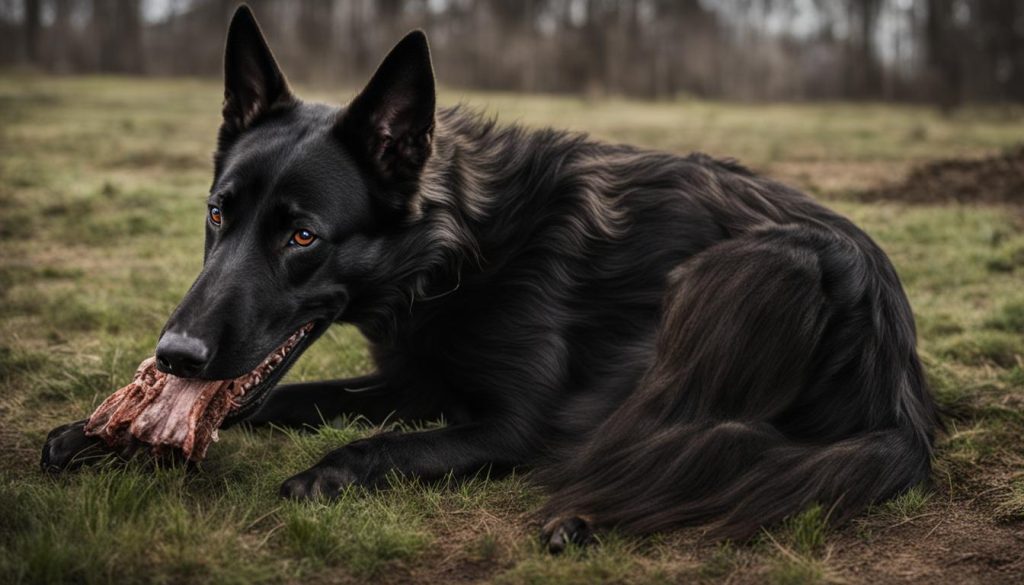
The Dutch Shepherd is a highly intelligent and versatile breed known for its exceptional herding abilities. With their strong work ethic and natural protective instincts, they excel in various tasks and make excellent working dogs. To bring out the best in a Dutch Shepherd, it is important to have a dominant and consistent owner who can provide proper training and guidance.
Due to their independent nature, Dutch Shepherds can sometimes have an unpredictable temperament. They require a firm and powerful trainer who can establish boundaries and enforce rules effectively. Early socialization is crucial to ensure that they interact well with other animals and strangers.
Training Challenges
The Dutch Shepherd’s high intelligence and energy levels can pose training challenges, making it important to provide mental and physical stimulation. Without proper guidance and outlets for their energy, they may become bored and develop destructive behaviors.
Training a Dutch Shepherd requires patience, consistency, and a firm approach. It is important to establish yourself as the pack leader and provide clear boundaries to prevent any behavioral issues. A well-trained Dutch Shepherd can become a loyal and reliable companion.
One notable characteristic of the Dutch Shepherd is its impressive bite force, which is measured at 224 PSI. This powerful bite force is an inherent trait that stems from their history as working dogs, where they were bred to protect livestock and property. It is essential to channel their instinct to bite into appropriate activities and discourage any aggressive behavior through proper training and socialization.
The Dutch Shepherd’s bite force serves as a reminder of their formidable strength and emphasizes the importance of responsible ownership. As with any dog breed, understanding their unique characteristics and meeting their needs is key to ensuring a harmonious relationship between humans and Dutch Shepherds.
Current personality traits
The Dutch Shepherd is a confident and loyal breed, known for its versatility and adaptability. They are highly trainable and excel in various dog sports, search and rescue operations, and service work. Their keen senses and strong work drive make them a preferred choice for law enforcement agencies and other demanding roles.
When properly trained and socialized, Dutch Shepherds can also thrive in family environments. They are protective and devoted to their human companions, making them excellent watchdogs. While their intense drive and energy may not be suitable for every household, with the right owner and environment, the Dutch Shepherd can be a loyal and loving companion.
Alano Español (227 PSI)
The Alano Español is a large and aloof breed originating from Spain. With their powerful bite force of 227 PSI, Alano Españols make formidable guard dogs and are highly protective of their families and territory. Their muscular build, coupled with their natural instincts, allows them to excel in tasks such as guarding livestock and property.
However, it’s important to note that Alano Españols require assertive leadership and are best suited for experienced dog owners who can provide proper training and socialization. This breed is known for its independent nature, and early socialization is vital to ensure they are well-behaved and adaptable in various environments.
Doberman (229 PSI)
The Doberman is known for its sleek and elegant appearance. They are fiercely loyal and make excellent guard dogs. With a bite force of 229 PSI, they can be quite powerful. Proper training and socialization are important to ensure they are well-behaved and not overly boisterous.
Boxer (230 PSI)
Boxers are known for their gentle and loving nature. They are great family pets and get along well with children and other animals. While their bite force is not the highest at 230 PSI, it is still important to provide them with proper training and exercise to prevent any aggressive behavior.
Training and Socialization for Boxers
Boxers are intelligent and eager to please, making them highly trainable. Early socialization is crucial to ensure they develop good behavior and manners. Positive reinforcement methods, such as rewards and praise, work best for Boxers. Consistent training will help channel their energy and prevent any potential behavioral issues.
Exercise Needs of Boxers
Boxers are an active breed that requires regular exercise to maintain their physical and mental well-being. Daily walks, playtime, and interactive toys are essential to keep them engaged and prevent boredom. Boxers are known for their athleticism, so activities like agility training or playing fetch are highly beneficial for them.
Boxer Bite Force Comparison
While the Boxer’s bite force of 230 PSI is lower compared to some other breeds, it should not be underestimated. Here is a comparison of the Boxer’s bite force with a few other popular dog breeds:
| Breed | Bite Force (PSI) |
|---|---|
| Boxer | 230 |
| German Shepherd | 238 |
| Rottweiler | 328 |
| Bullmastiff | 556 |
As you can see, while the Boxer’s bite force is not the highest, they still possess a significant amount of power. It is important to remember that bite force alone does not determine a dog’s behavior. Proper training, socialization, and responsible ownership are key factors in ensuring any dog, including Boxers, remains well-behaved and friendly.
Pitbull (235 PSI)
Pitbulls have gained a negative reputation in the media, but they are actually loyal and humble dogs. With a short coat and minimal grooming requirements, they are ideal for busy pet owners.
Their bite force of 235 PSI makes them capable of providing protection, but proper socialization and training are important to ensure they are well-behaved.
| Breed | Bite Force (PSI) |
|---|---|
| Malinois (Belgian Shepherd) | 195 |
| English Bulldog | 210 |
| Chow Chow | 220 |
| Dutch Shepherd | 224 |
| Alano Español (Spanish Alano) | 227 |
| Doberman | 229 |
| Boxer | 230 |
| Pitbull | 235 |
Wrapping Up
In conclusion, dogs come in a wide variety of breeds, each with its own unique bite force. While certain breeds may have a higher PSI than others, it is important to note that responsible ownership and proper training are essential in preventing dog bites. Socialization plays a crucial role in developing a well-behaved and non-aggressive dog.
Understanding the bite force of different dog breeds can help educate dog owners and the general public about potential risks and safe practices when interacting with dogs. It is essential to promote safe interactions between humans and dogs to prevent accidents and unfortunate incidents.
By prioritizing training, socialization, and responsible ownership, we can create a positive and safe environment for both humans and dogs. Being aware of the bite force of different breeds allows us to make informed decisions and ensure the well-being of everyone involved.
FAQ
What dog breeds have the strongest bite force?
The top 20 dog breeds with the strongest bite force based on PSI scores are the Malinois, English Bulldog, Chow Chow, Dutch Shepherd, Alano Español, Doberman, Boxer, and Pitbull, among others.
What does PSI stand for when measuring bite force in dogs?
PSI stands for pounds per square inch, and it is the unit used to measure bite force in dogs.
What is the bite force of the Malinois?
The Malinois, also known as the Belgian Shepherd, has a bite force of 195 PSI.
How strong is the bite force of an English Bulldog?
The English Bulldog has a bite force of 210 PSI.
What is the bite force of a Chow Chow?
The Chow Chow has a bite force of 220 PSI.
How strong is the bite force of a Dutch Shepherd?
The Dutch Shepherd has a bite force of 224 PSI.
What is the bite force of an Alano Español?
The Alano Español has a bite force of 227 PSI.
How strong is the bite force of a Doberman?
The Doberman has a bite force of 229 PSI.
What is the bite force of a Boxer?
The Boxer has a bite force of 230 PSI.
How strong is the bite force of a Pitbull?
The Pitbull has a bite force of 235 PSI.
Are dogs with the strongest bite forces more likely to be aggressive?
While certain dog breeds may have stronger bite forces, it is important to remember that factors like training, socialization, and responsible ownership play a significant role in their behavior. Proper training and socialization can help prevent aggression in dogs.
Why is understanding the bite force of different dog breeds important?
Understanding the bite force of different dog breeds can help educate and promote safe interactions between humans and dogs. It allows dog owners and others to have a better understanding of a dog’s capabilities and behavior.


